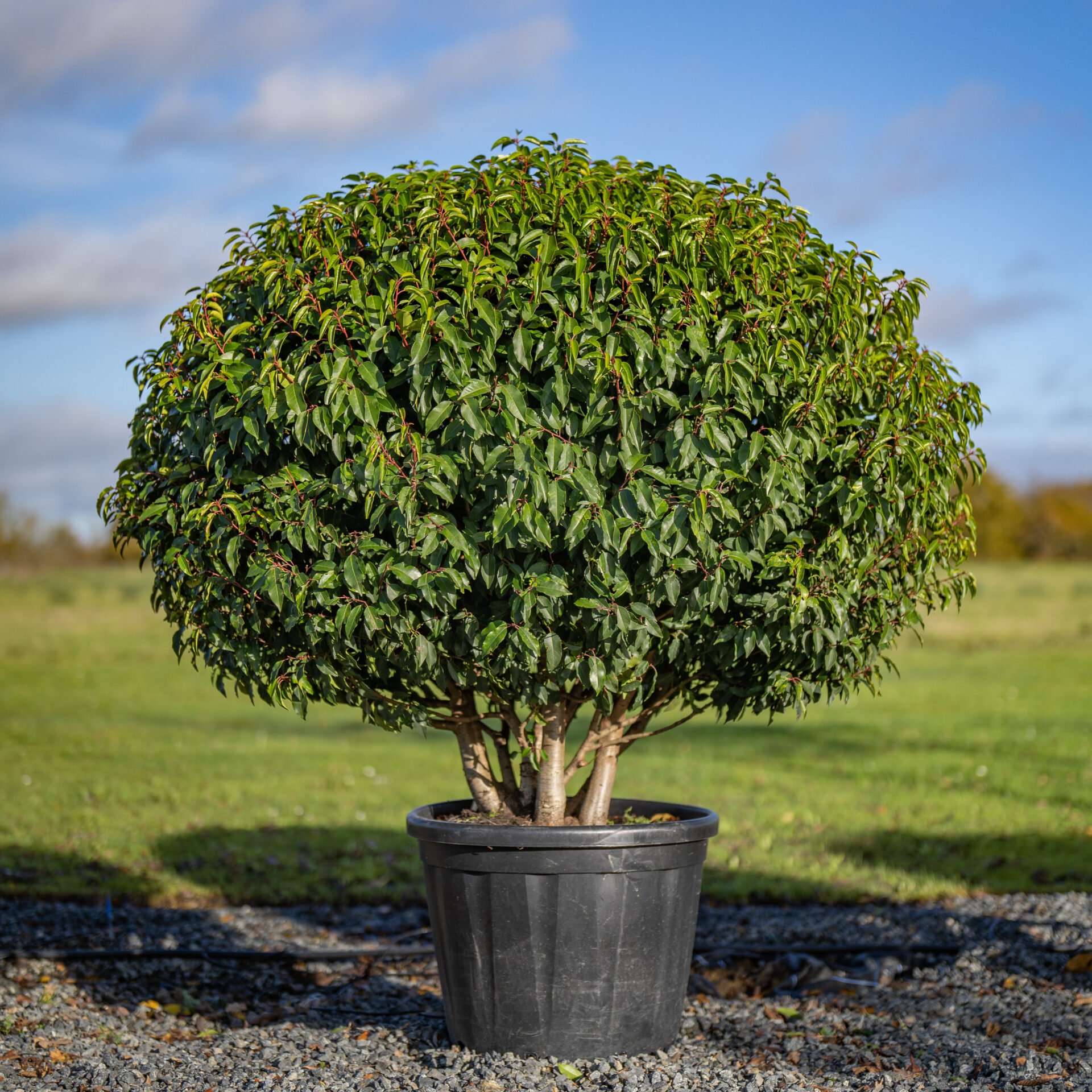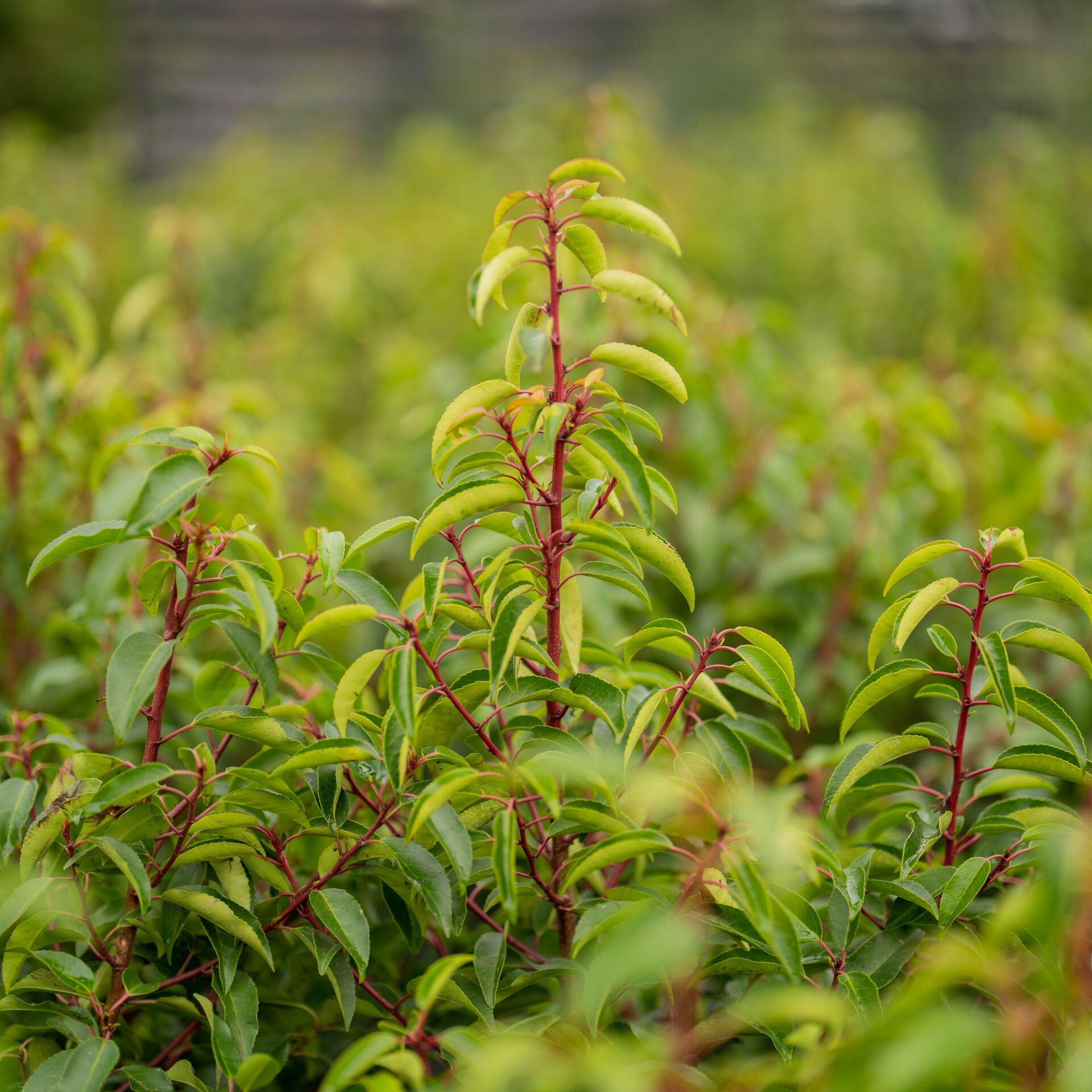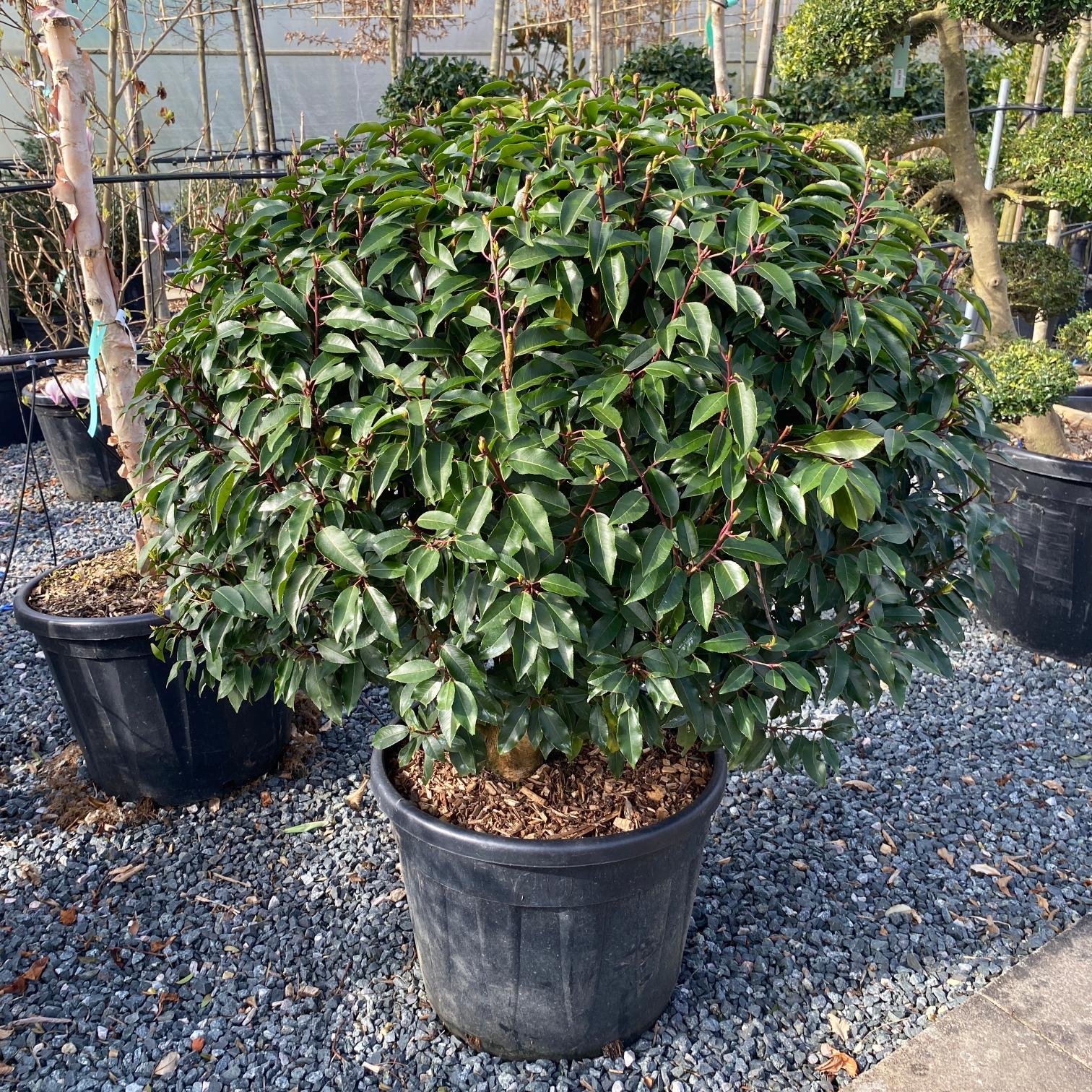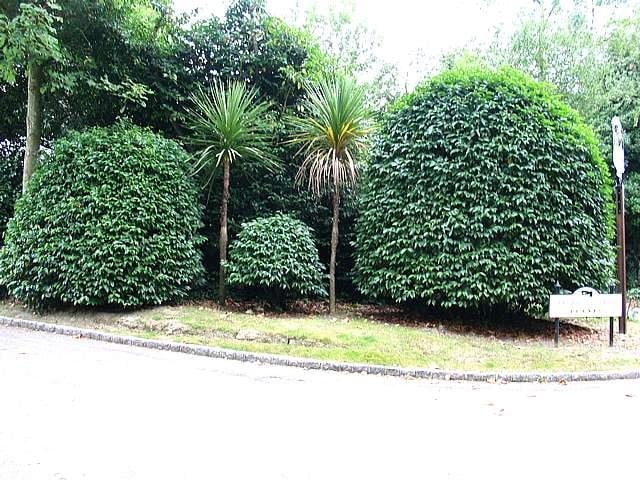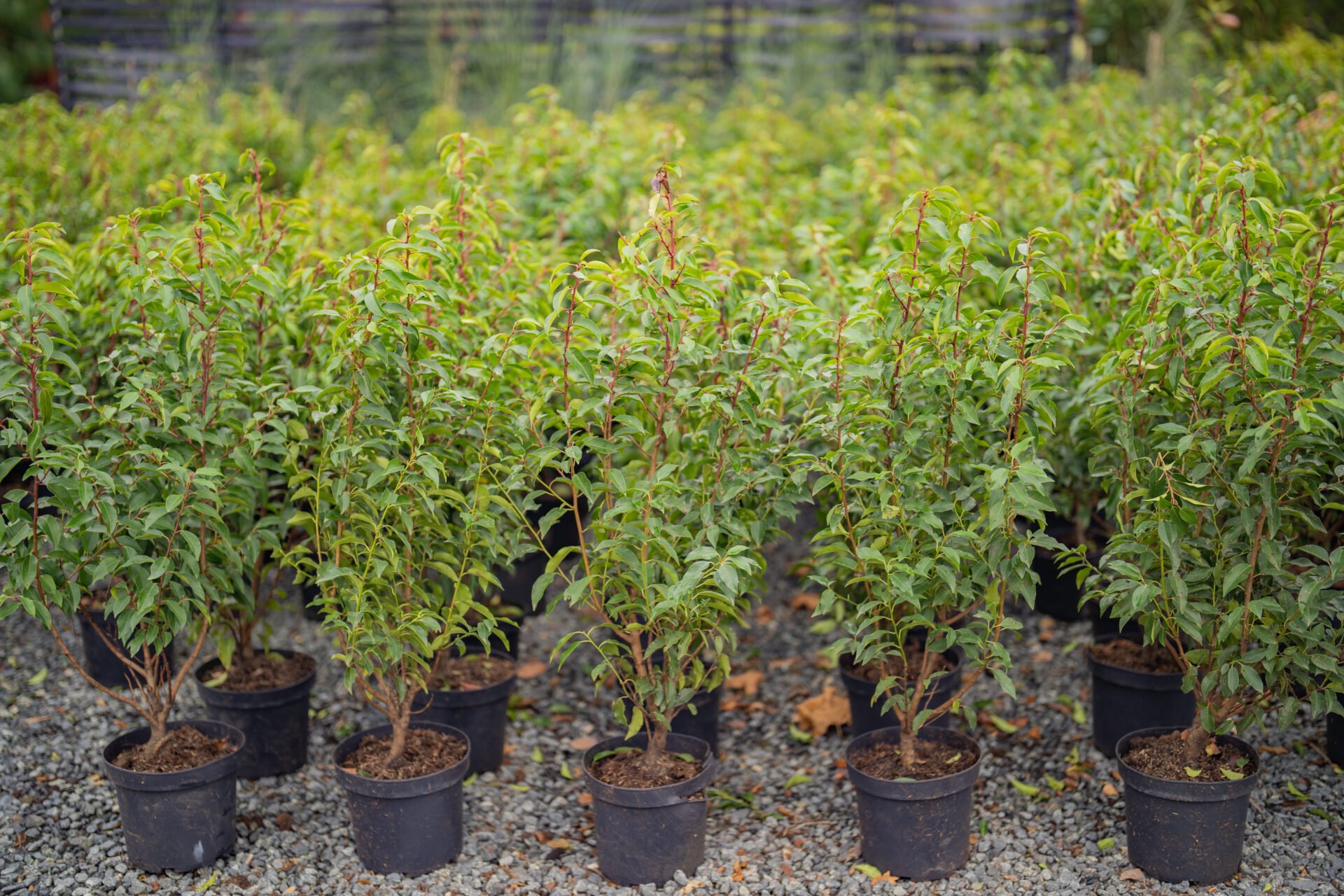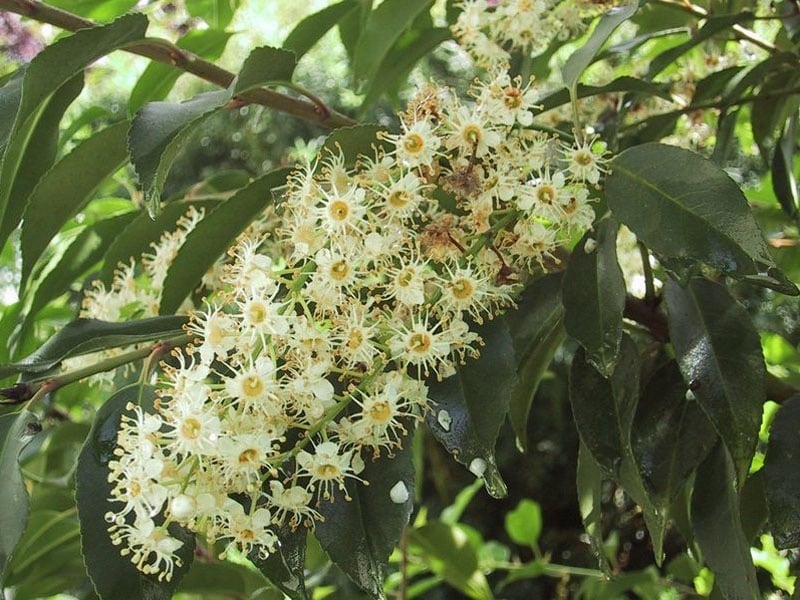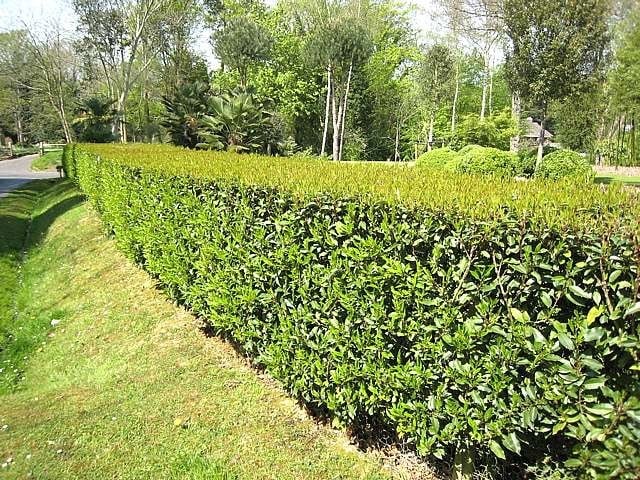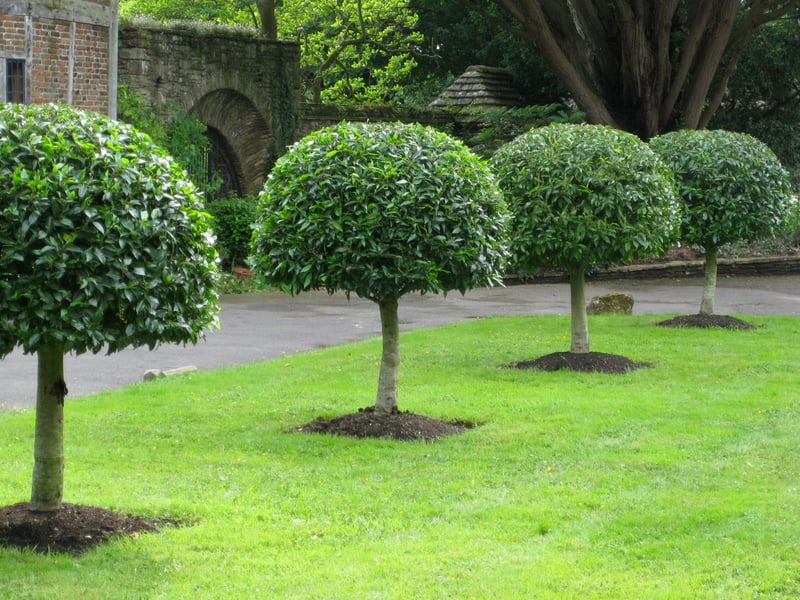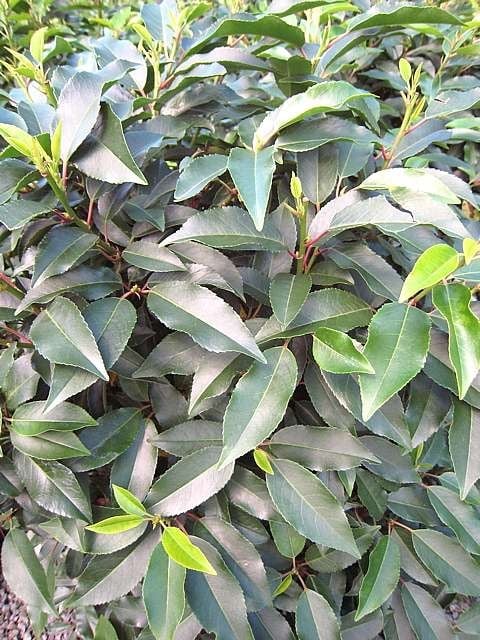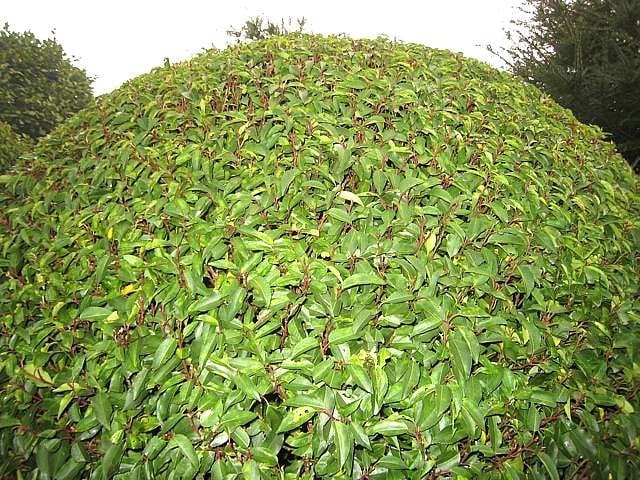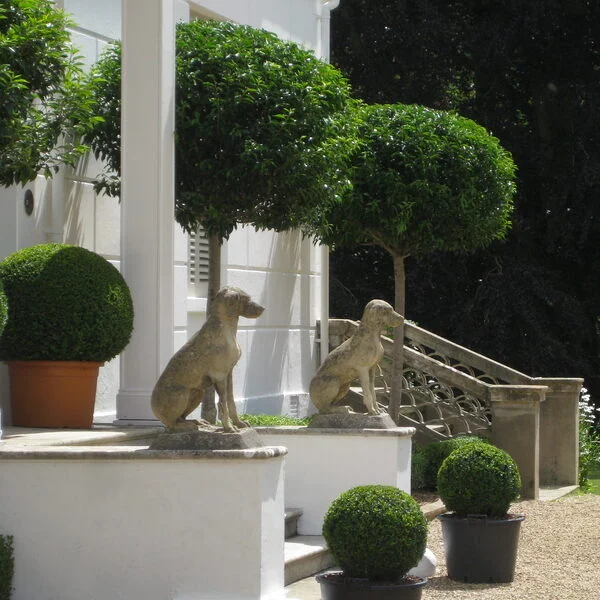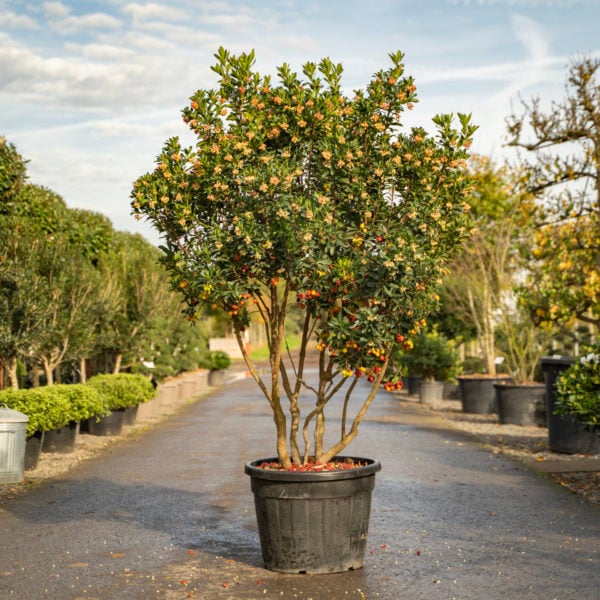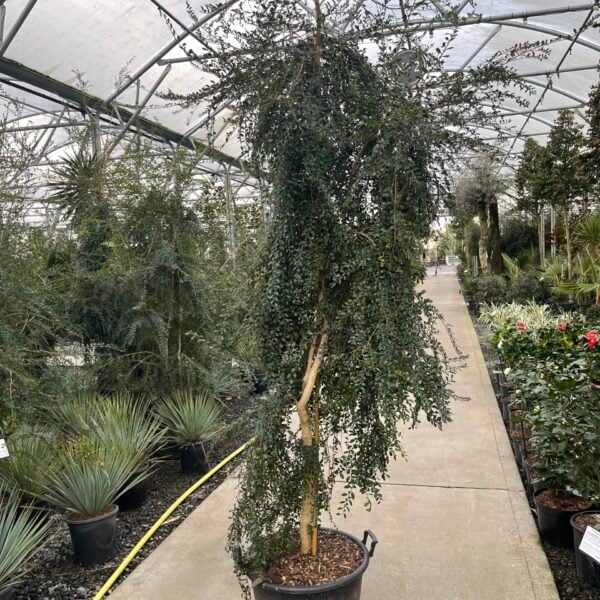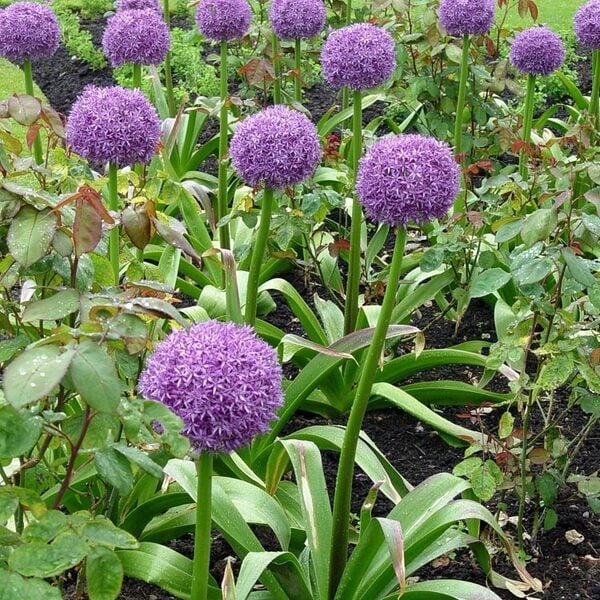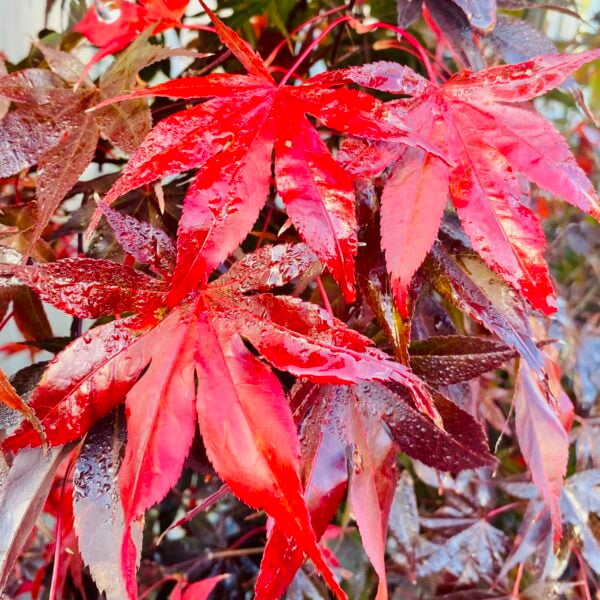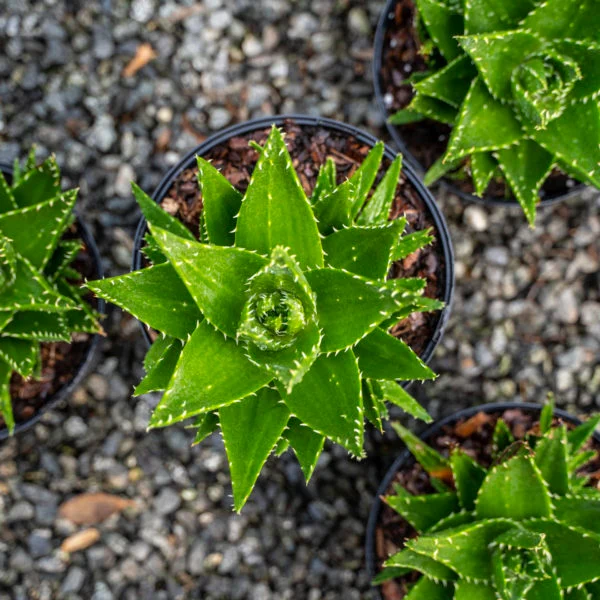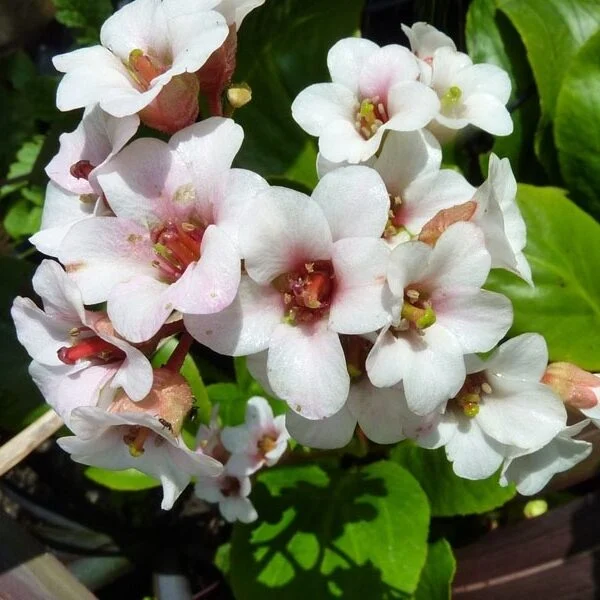Prunus lusitanica ‘Myrtifolia’ (Portuguese Laurel)
Well known evergreen, tough as old boots. It has so many uses – we sell it as mushrooms, cones, mop heads and for hedging. As a tree it could reach 20 ft in 25 years. Please contact us for stock availability and sizes.

Hardiness level Green
We find that 90% of the Portuguese Laurel we sell nowadays is the narrow leafed form that we call 'Mrytifolia'. It's also sometimes referred to as the form 'Angustifolia'. The leaf is smaller and narrower than the traditional form, seems less prone to pests and - frankly - is much, much prettier - especially when clipped. Its toughness and its beauty and liking for being clipped make this one of our most important crops. We can go on and on about it. And frequently do.
We still sometimes sell mature topiary grown from the larger leafed version. They have a charm of their own - especially when big.
Very unfussy. Can be grown anywhere except waterlogged soil. It can be pruned and clipped very successfully into hedges or for topiary. If grown in pots, then prune to shape with secateurs regularly. Do not allow the soil to dry out, keeping it moist but not sodden. Feed with a slow acting fertiliser such as Blood, Fish and Bone.
All woody plants that are going to be shaped, need to be cut at a time in the growing season when there will still be enough time for new growth to come (often mid to late summer) so that by the time winter comes along, they don't look like they've just had a haircut. There is a particular problem associated with all Cherries (Prunus); pruning the leaves in mid summer makes them susceptible to attack by an endemic fungus that causes 'shot hole'. This effects the new leaves that grow after pruning - they emerge discoloured and full of little holes. It doesn't have a lasting effect but does look unsightly and is best avoided. How? Never prune Prunus in Junus...NEVER PRUNE PRUNUS IN JUNUS. If you avoid pruning in June, you are much more likely to avoid problems with shot hole. Try pruning, up to the middle of May or after mid July to be on the safe side. Good luck!
This plant is susceptible to powdery mildew which is an endemic air-born fungal. It is easy to treat and we recommend the following action is taken as soon as you notice the white powdery residue on the leaves (usually worst in the inner part of the plant): - Give the plant a good clip, removing as much of the affected parts as possible without cutting too hard into the central branch structure. - Clean up thoroughly and remove all rubbish from the area. - Spray with a general purpose ready to use systemic fungicide - one that contains myclobutanil - such as Fungus Fighter. This, or a similar product should be available at your local garden centre or you can buy it on-line. Be sure to follow the instructions carefully and repeat treatments as necessary. This protects and cures and so can be used regularly if needed.
Propagated from cuttings
N.B. When clipping several plants with the same tool, have a bucket containing a 5% bleach solution and swish your blades around for 30 seconds between plants to sterilise them. This will help avoid the chance of cross contamination of disease.
As with all woody plants, plant high, exposing as much of the taper at the base of the trunk as possible. Allowing soil to accumulate round the base of a tree can be fatal. Keep very well watered when first planted.
Additional Information |
|
|---|---|
| Soil Type | Clay, Dry / Well Drained, Sandy, Soggy /Damp (Plant high and you can get away with murder) |
| Light | |
| Plant Type | Evergreen, Flowers, Grown by Us, Hedges, Screening Plants, Shrubs, Trees |
| Continent of Origin | |
| Specialist Plants | |
| Tree Size | |
| Situation | Coastal, Exposed (To wind and sun), Mild City Gardens, Plants for Pots, Sheltered Garden |
| Flower Colour | |
| Hardiness | |




